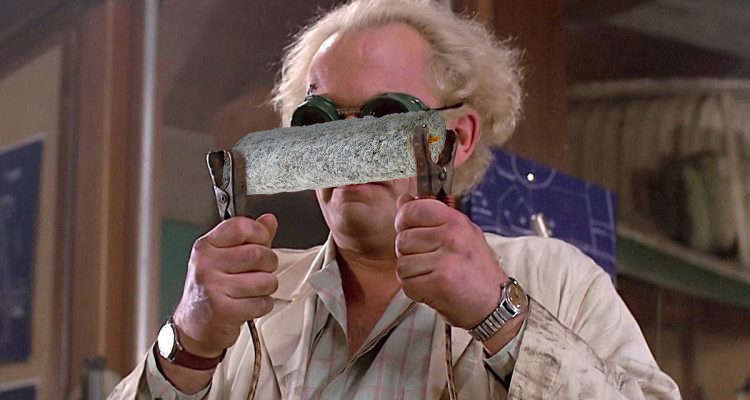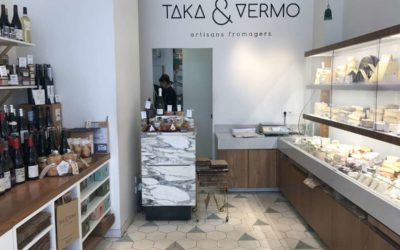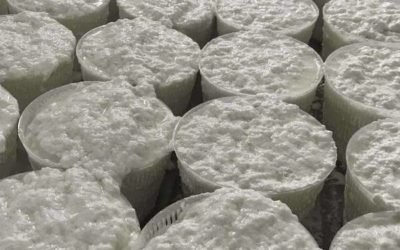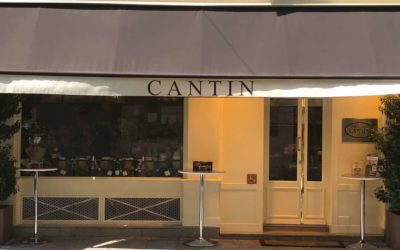How to taste cheese?
Eating cheese is easy: you put it in your mouth, you chew it and you swallow it. During our Le Cheese Geek cheese and wine tastings you will learn a completely different approach to eating cheese, you’ll learn to taste it. Tasting is a method.

We recommend first and foremost that you put yourself in the right tasting conditions: a quiet and bright place without too much stimuli so that you can concentrate.
Cheese tasting can be considered a choreography with three parts.
1. Visual examination
Pick up your piece of cheese — this is important, you can wash your hands after! — and describe all of its physical aspects: first the cheese itself, then the body, starting with the most obvious before going into detail.
- the size of the cheese: is it small or big? Then its shape: small pyramid, circular, cylindrical, square, triangular, doughnut…
- the color of the rind: single color, several colors, white, grey, ashen, light yellow, orange, rust…
- and its texture: flat, soft, bumpy, veined, smooth, uneven…
Next we’ll describe its body while giving an idea of:
- its texture or textures (runny, creamy, chalky, dry, hard), its color or colors and everything else you are able to identify (consistent or irregular holes, crystals…)
- anything special like holes, irregularities, air bubbles,…
The visual examination of the cheese allows us to learn certain things about it, specifically:
-
the type or family of cheese: fresh, natural rind, bloomy rind, washed rind, semi-hard, hard, blue-veined
-
the production: the cheese will generally have a more irregular appearance if its an artisanal cheese
-
the quality of production: the texture of the body and its irregularities indicate certain techniques during the production process, like draining, pressing, etc….
-
the type of milk used: goats milk is easily recognizable because it’s the whitest. A summer cheese will have more color or be more yellow than a winter cheese
-
the aging: we can determine its stage in the aging process by looking at it, for example the size of the white line in a Camembert tells us the number of weeks it has been aging, the more crystals found in a Comté, the older it is.
2. Smell test
This isn’t an essential step but it’s always good to smell your cheese. This allows you to describe two main components: its strength (from odorless to extremely stinky) and its aromas (milk, hay, farm, feet…)
The idea here is to get a feel for the cheese’s personality: if it’s too mild or on the contrary too strong. This is a hard exercise and it can be sometimes be frustrating. If that’s case, don’t spend too much time on it: wave your piece of cheese back and forth quickly under your nostrils and say the first thing that comes to mind, knowing that every answer is a correct answer, then move to the next step.
3. Taste test
We’re finally ready to jump right in to it. Now you’ll want to throw that piece of cheese right in your mouth and get chewing.
While you have the cheese in your mouth, go ahead and describe its four main characteristics:
- the general intensity: from tasteless to extremely strong
- the texture: runny, creamy, chalky, dry, hard…
- the flavor or flavors and their intensity: sweet, salty, sour, bitter, umami (=savory, like soy sauce or barbecued meat). Note which flavors can be perceived on your tastebuds.
- and the aromas resulting from retro-olfaction, when air goes through your nose.
There are numerous possible aromas, but to name a few:
Lactic (milk, butter, cream, whey, yogurt)
Woody (earth, grass, moss, wood, mushroom)
Vegetable (leek, celery, artichoke, onion, garlic)
Floral (honey, lavender, white flowers)
Fruity (apricot, lemon, apple, dried fruit)
Roasted (caramel, dark chocolate, roasted nuts, toasted bread, baked mac & cheese)
Animal (barnyard, meat broth, meat, horse, leather)
Spicy (nutmeg, pepper, curry, vanilla, cumin)
And that’s it! You have just done a tasting like a professional. I invite you to take the time to do tastings as often as possible and if you really want to get better at it.
The last CheeseNews
La fromagerie Taka&Vermo : the most vivid cheese shop in Paris
Quelques mois après s’être rencontrés, Mathieu et Laure décident de créer un projet commun autour de leur amour pour les produits laitiers. C’est ainsi qu’après un Tour de France des fromages à la rencontre des petits producteurs, la fromagerie Taka & Vermo voit le jour.
Le tour de fromage
Better than Le Tour de France, le Tour de Fromage 🙂 Let’s discover French cheese regions one cheese at a time.
Have a nice trip !
La fromagerie Marie Anne Cantin : the most authentic cheese shop in Paris!
Fromagerie Cantin has opened in 1950, originally created by Marie-Anne Cantin’s parents. As a child, she enjoyed selling cheeses and when she turned 25, Marie-Anne took over the family business.





